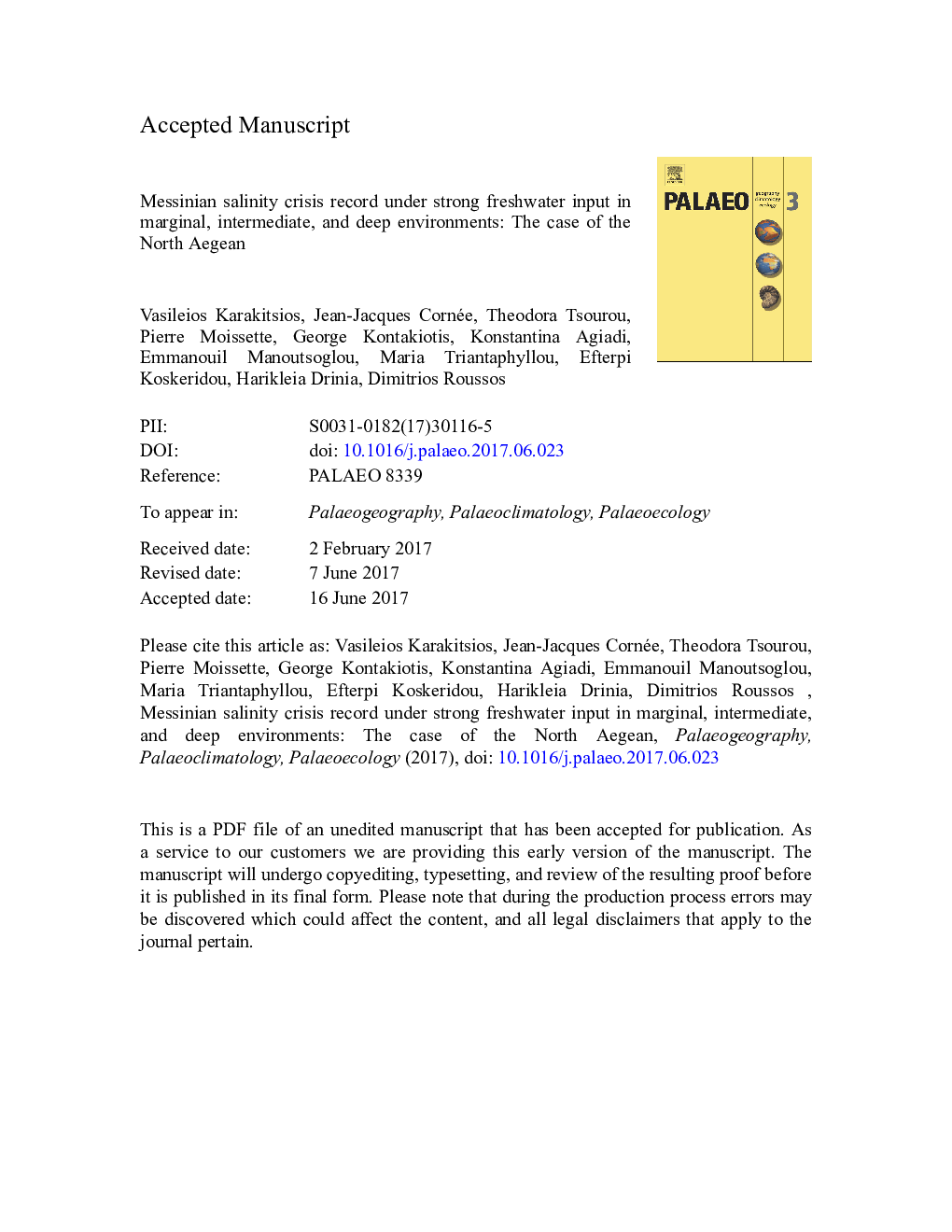| Article ID | Journal | Published Year | Pages | File Type |
|---|---|---|---|---|
| 8868658 | Palaeogeography, Palaeoclimatology, Palaeoecology | 2017 | 63 Pages |
Abstract
In the present study, we investigate the Mediterranean-Paratethys connection during the late Miocene in Strymon Basin (North Aegean, northeastern Mediterranean) and compare this onshore sequence with the adjacent offshore Prinos-Nestos sequence, before, during, and after the Messinian Salinity Crisis (MSC). Strymon Basin was a peripheral shallow-water basin during the first MSC stage. The Akropotamos sections expose a clastic sequence with gypsum intercalations, which is dated in the Messinian based on the ostracod and calcareous nannofossil assemblages. This sequence records the Primary Lower Gypsum deposition in a shallow marine environment and its passage via the Messinian erosional surface to a brackish environment with changing salinity conditions similar to the Paratethyan depositional environments. The sequence is capped by a travertine marker horizon observed across the entire Strymon Basin indicating freshwater environment. The Miocene-Pliocene transition is characterized by salinity changes caused by the interaction between Atlantic-Mediterranean and Paratethyan waters, predating the marine reflooding at the end of the MSC, which is attested by the overlying Pliocene open marine deposits. The offshore Prinos-Nestos basin incorporates the Nestos intermediate basin and the Prinos intermediate-deep basin. Borehole and seismic profile data from the offshore Prinos-Nestos oil field reflect a thick clastic sequence, topped by turbidites, and followed by an evaporitic unit deposited during the Messinian. In the Nestos slope area, the evaporite unit consists of anhydrite-shale alternations. Toward the basin's depocenter (Prinos Basin), anhydrite is replaced by halite. The sequence is overlain by Pliocene-Holocene deltaic prograding deposits. Sedimentologic and biostratigraphic data show that the thick halite-shale couplets in the deepest part of the offshore Prinos-Nestos Basin were deposited under permanent marine conditions, suggesting no desiccation before, during, and after the MSC. Conclusively, the present results indicate that a connection between the Mediterranean and the Paratethys was occasionally established before the Pliocene reflooding and favor the non-desiccation MSC model for the deep marine evaporite deposition.
Related Topics
Physical Sciences and Engineering
Earth and Planetary Sciences
Earth-Surface Processes
Authors
Vasileios Karakitsios, Jean-Jacques Cornée, Theodora Tsourou, Pierre Moissette, George Kontakiotis, Konstantina Agiadi, Emmanouil Manoutsoglou, Maria Triantaphyllou, Efterpi Koskeridou, Harikleia Drinia, Dimitrios Roussos,
